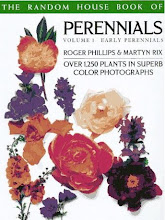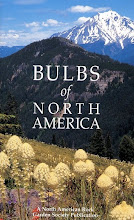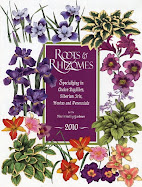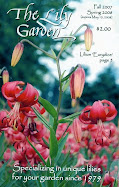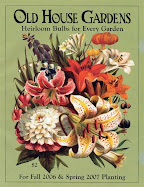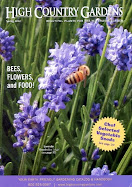Salix babylonica beside the Mid Pond. 'Your next steps take you from the deep woods into a formal European landscape accented by lakes, towering English elms and a stately weeping willow, with a dramatic view of the Bloedel’s former residence. This French country-style home, now our Visitor Center, commands a view of Puget Sound’s Port Madison Bay near Agate Pass. An active eagle’s nest is visible from the east lawn. Flanked by a gracious living room and dining, the central room in the Bloedel’s former residence houses a cozy Library with a collection of 1,400 horticultural and botanical books, available for reading and research on site.' from the Bloedel Reserve website. Next come The Glen, The Japanese Garden & The Moss Garden, which are the subjects of separate posts.
Finally, you re-enter the West Meadow at its mid-point & return to the parking lot. These photos were all taken in April 2011.
Map of the Bloedel Reserve from the brochure.
The Bloedel Reserve in Bainbridge Island, Washington near Seattle is one of the finest gardens in the United States. Prentice & Virginia Bloedel resided on the property from 1951 to 1986. They developed the 150-acre property, mostly 2nd-growth forest, into the present series of gardens. The Arbor Fund, established and endowed by the Bloedels in 1974, purchased the Bloedel Reserve in 1985 & continues to manage it. One of the 1st to work on the Reserve, under the Bloedels, was Ray Prentice of Prentice Nursery in Seattle. He built the waterfall & planted shrubs & trees on the waterfall bank. The famous landscape architect Thomas Church of San Francisco began working with the Bloedels in 1954. He prepared conceptual drawings for the Mid-Pond area that became the scenic driveway loop. He also designed the Waterfall Overlook, the Orchid Trail (1st called the Church Walk) & the Reflection Garden. Fujitaro Kubota of Kubota Nursery in Seattle designed & installed the Japanese Garden in 1961. The Zen Garden was designed by Koichi Kawana, professor of landscape architecture at UCLA.
In the Treaty of Point Elliott, signed by Chief Seattle in 1855, the Suquamish Tribe ceded Bainbridge Island to the US government. By the late 1800s, Bainbridge Island was home to the world's largest sawmill, the Port Blakely Mill, which closed in the mid 1920s. Many of the mill workers were Japanese. In 1942 Bainbridge Island became 1 of the first communities required to respond to Executive Order 9066, which removed those of Japanese ancestry to internment camps. 220 Japanese-Americans were sent to Manzanar on the edge of the Mojave Desert, and then to Minidoka in Idaho. The novel Snow Falling on Cedars by David Guterson is set on Bainbridge Island.




































































